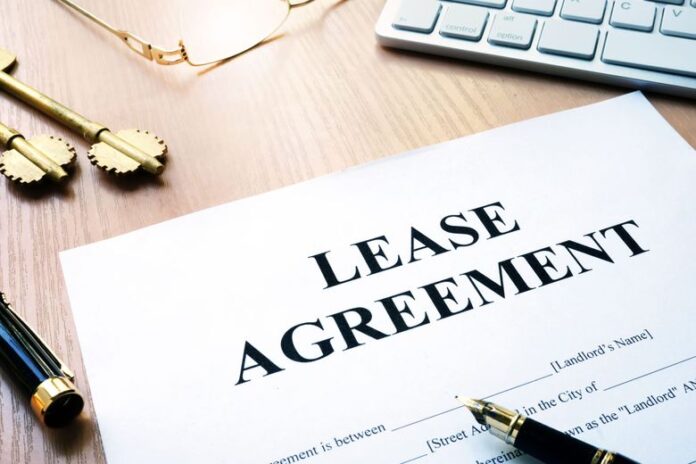Navigating the world of real estate can be akin to walking through a regulatory minefield, especially when it comes to tenant-landlord relationships. For California residents, understanding the intricacies of a lease contract is not just advisable—it’s essential to ensuring a smooth and law-abiding rental experience. This detailed guide will lead you through the essential components of crafting and negotiating your california lease, providing you with the legal protection and peace of mind you deserve.
Understanding California Lease Laws
Before a single word is penned to your lease contract, it’s imperative to have a solid grasp of the laws that govern landlord-tenant agreements in the Golden State. California is known for its robust tenant protections, with a myriad of regulations in place to maintain a fair and just rental market. Key legislation such as the California Civil Code, the Health and Safety Code, and the Fair Employment and Housing Act (FEHA) all influence the terms that must be included in your lease agreement and the actions that a landlord can take.
Essential Rental Agreement Provisions
Certain provisions in a lease are considered mandatory in California. These cover the basic rules and responsibilities of both landlords and tenants and include:
Names of All Tenants: All adult tenants should be named in the lease to create a legally binding contract.
Rental Amount: The monthly rent and the due date must be clearly stated.
Security Deposit: The terms for the security deposit, such as the amount and conditions for its return, need to be specified.
Duration of Tenancy: This includes the start and end date of the lease if it is a fixed-term lease.
Repairs and Maintenance: The distribution of obligations for upkeep, maintenance, and repairs.
Access to Property by Landlord: The notice period required for the landlord to enter the property.
Restrictions on the Use of the Property: Any restrictions on activities that could damage the rental property or bother other tenants.
Procedures for Ending the Tenancy: This includes the notice period needed to terminate the lease.
Crafting a Comprehensive Lease Agreement
Your lease is not just a formality but a powerful tool that can support or protect your rights. Creating a comprehensive lease agreement helps in laying out the terms and expectations clearly, reducing the risk of disputes down the line. To craft an effective lease, consider the following elements:
Lease Duration and Termination
Under California law, leases can be either month-to-month or fixed-term. The standard month-to-month lease automatically renews each month unless either party gives notice to end it. A fixed-term lease runs for a set period and typically does not require any notice to end at the termination date.
When drafting a lease, the key is clarity regarding when and how the tenancy can be terminated. Include the required notice periods for both the landlord and the tenant, as specified by law.
Rent Amount and Payment
The agreed-upon rent amount must be clearly stated, along with the due date and any late payment penalties. In California, the grace period for rent is generally not specified, so it’s important to outline this in the lease if one is desired.
To accommodate various payment methods, it’s advisable to not only specify the form of payment but also the addresses and names to which the payment should be delivered.
Security Deposits and Prepaid Rent
Outlining the conditions under which the security deposit can be withheld is crucial. California law limits the maximum amount that can be used as a security deposit to the equivalent of two months’ rent for an unfurnished property, and three months for furnished properties.
The lease must detail the procedures for handling the deposit, including the requirement for an itemized list of any deductions and the timeline for its return.
Negotiating Your Lease Contract
Approaching a lease from a negotiation standpoint is not just for corporate power plays. Tenants in California have substantial rights to request amendments or additions to the lease. Here’s how to negotiate effectively:
Know Your Rights
The first step in any negotiation is understanding your position. Familiarize yourself with the landlord-tenant laws that safeguard your interests. Knowledge is power, and in this case, it can be the difference between a stifling or a satisfying living arrangement.
Highlight Your Desires
Compile a list of terms and provisions you’d like to see in your lease. This could include the inclusion of specific appliances or the landlord’s agreement to pay for certain utilities. By communicating your needs clearly, you set the stage for an equitable negotiation.
Be Open to Compromise
Negotiation is a give-and-take process. While it’s important to advocate for your needs, being flexible can lead to a more successful outcome. Prioritize your requests, so you know where you’re willing to give a little to get a little.
Get It in Writing
Any changes to the lease must be documented in writing with both parties’ signatures for it to be legally binding. Verbal agreements are difficult to enforce, so ensure that all negotiated terms are included in the lease or an addendum to the lease.
Additional Considerations for a Smooth Rental Experience
Beyond the statutory components and straightforward negotiations, there are additional elements that can contribute to a more satisfactory rental experience in California.
Create a Move-In Checklist
A comprehensive move-in checklist that details the condition of the property at the start of the lease can be invaluable when it’s time to move out. This document, signed by both parties, serves as evidence of any pre-existing damages.
Understand the Conditions for Entry
While landlords in California have the right to access their rental properties, this right is not unrestricted. The law requires reasonable notice to be given to tenants, typically 24 hours, except in emergencies.
Document Everything
Maintain a record of all communication with your landlord, especially concerning repairs or complaints. Written records can be essential evidence in a dispute, as verbal agreements are difficult to prove.
In Summary
Crafting a lease contract in California is a blend of statutory compliance and well-informed negotiation. By understanding state laws, tailoring your agreement to your needs within legal limits, and maintaining organized documentation, you not only secure legal protection but also set the stage for a positive and peaceful tenancy. Remember, a lease is a living document that should evolve with your rental situation, so don’t hesitate to revisit and revise it as required. Your lease is the foundation of your rental relationship, and by building it wisely, you can ensure a solid and secure experience as a tenant in California.
















